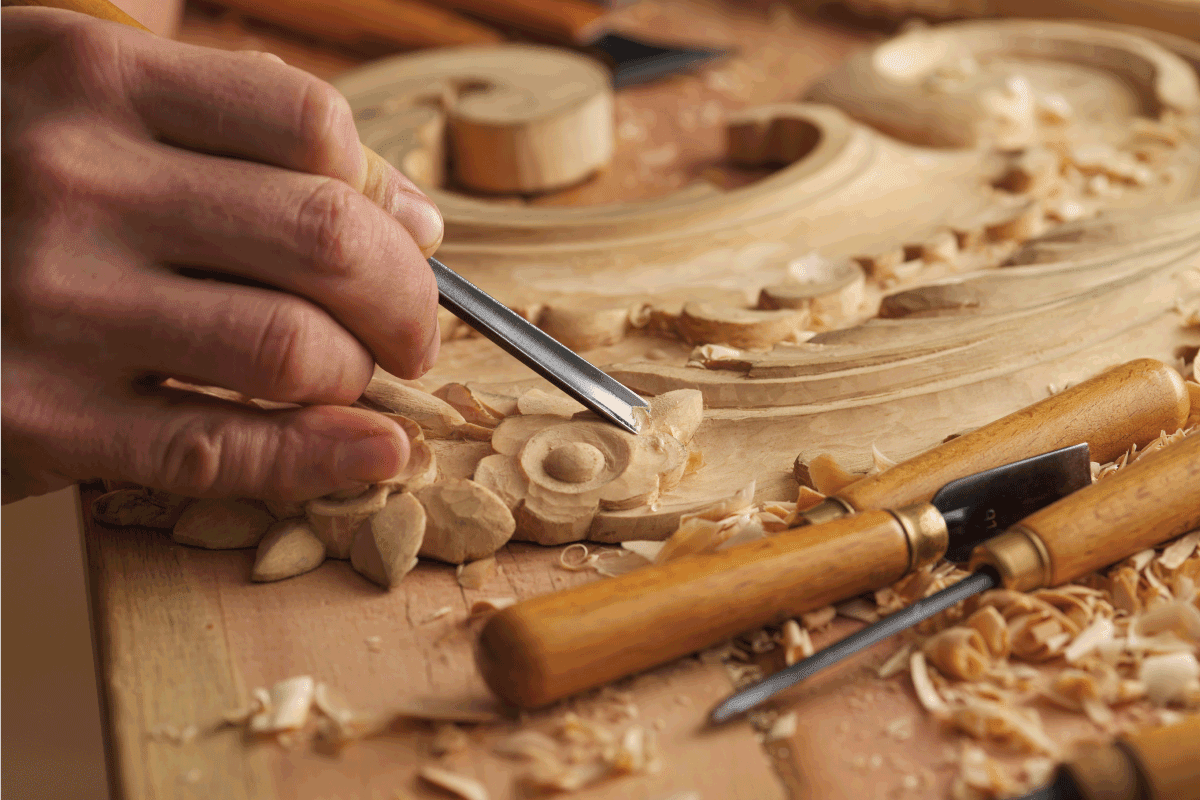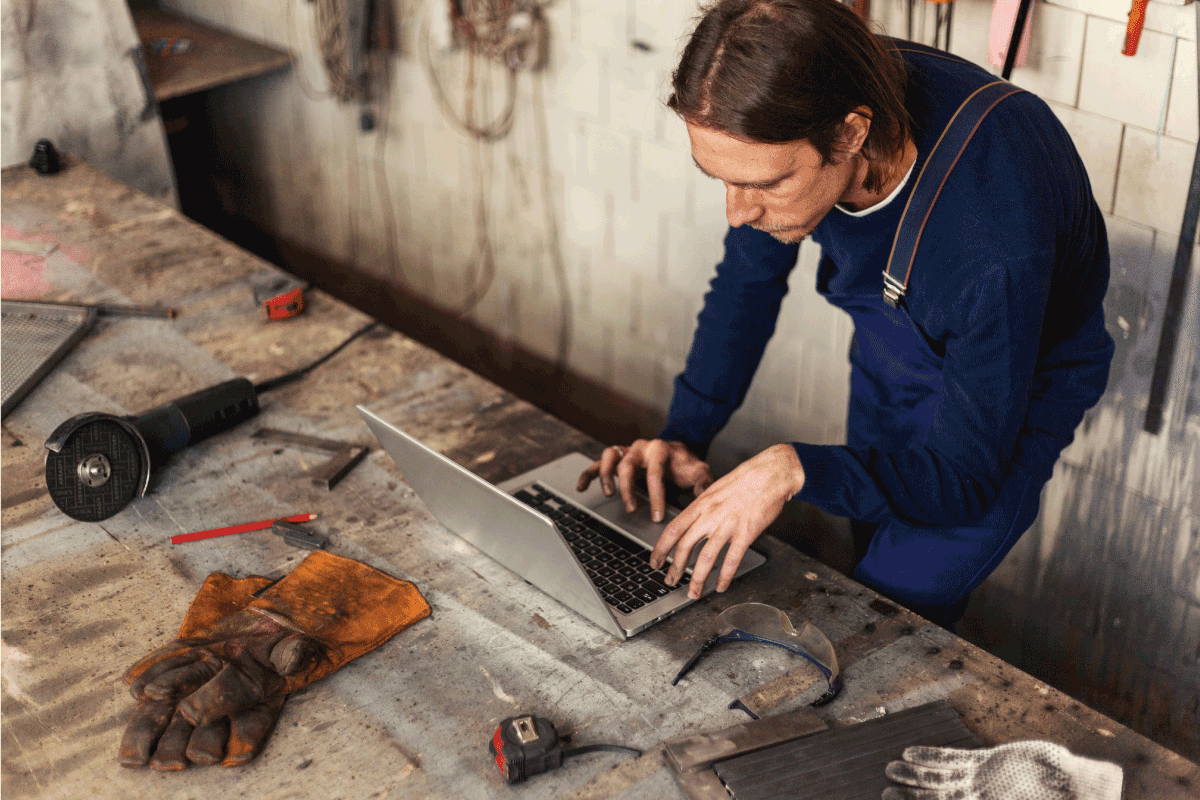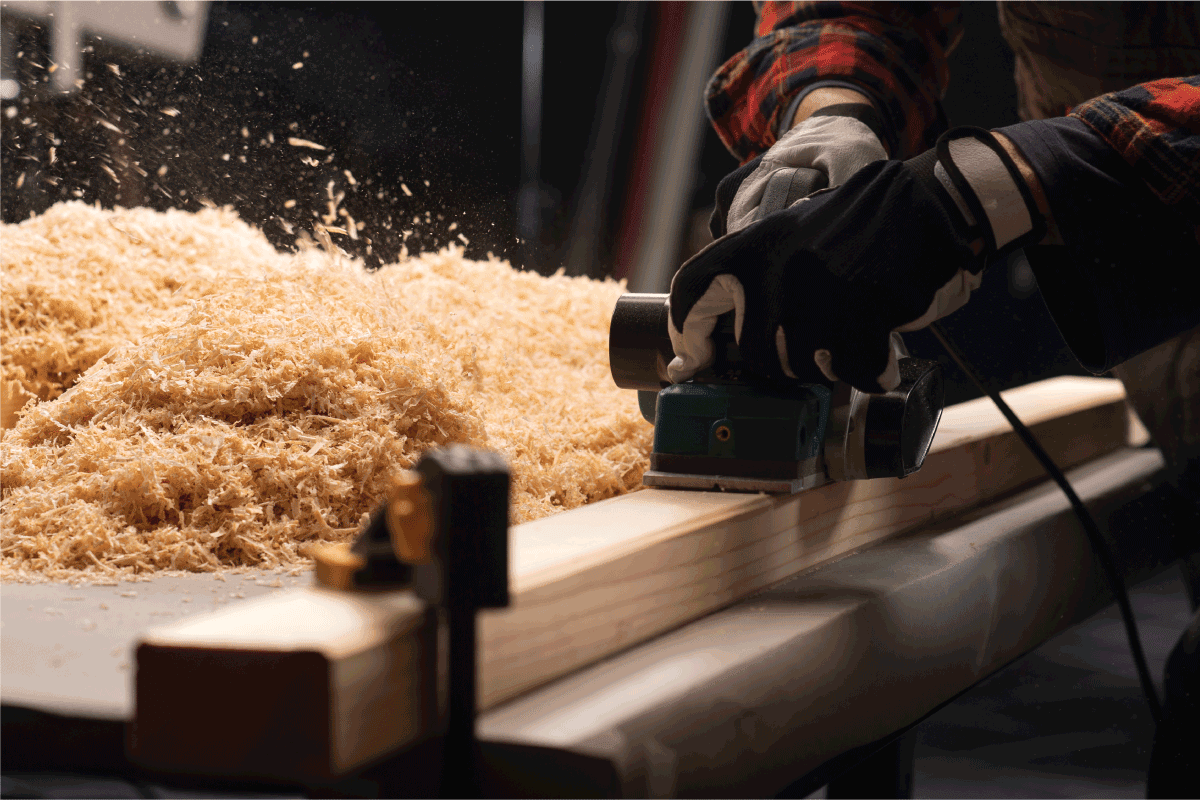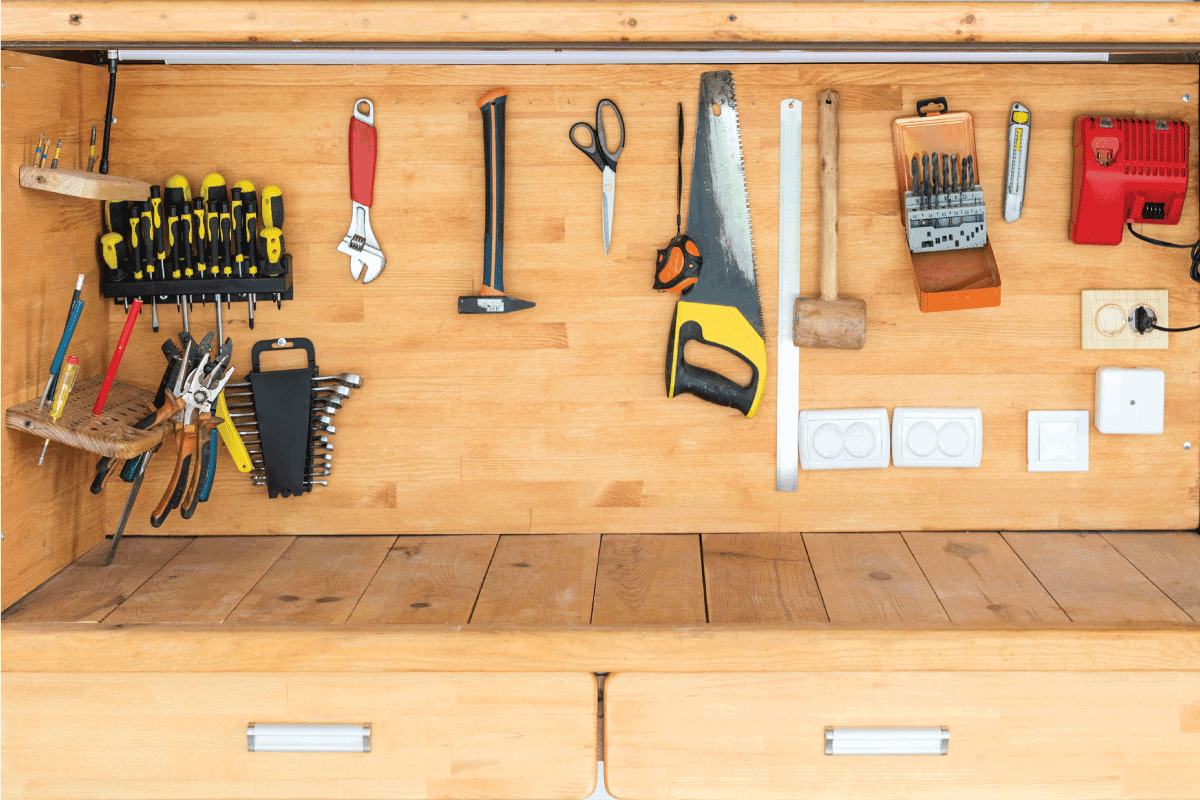A workbench essentially serves as a workstation. You need to take both height and length into account when choosing a workbench to ensure safety and efficiency. Do you want to know the ideal workbench's height and length? We've done all the research you need to know about the dimensions so you can buy or build your workbench with confidence.
The ideal workbench height is 38”-39” for detailed work, 34”-36” for a wide range of tasks, and 29”-30” for woodworking. However, the ideal length of the workbench is a matter of preference, so you can make it as long as you’d like but the majority have 48”- 96” long.
In this article, we'll delve deeper into the ideal dimensions of workbenches. We're also going to share some characteristics to consider if you want to have a high-quality workbench and some woods ideal for a workbench top. More information is ahead, so keep on reading.
How Tall Should A Workbench Be?
If woodworking is new to you, you probably just started setting up your workshop. There are many tools (and abilities) to learn, but the workbench is a need in every woodworking business.
Unfortunately, a lot of people fail to recognize the significance of picking the proper height for their workbench and end up suffering the negative effects of the incorrect height.
It's crucial to take your height into account as well as the workbench's intended purpose when determining your optimal workbench height. You can construct a workbench that is both secure and efficient if you take into account both of these factors.

Workbench Height In Relation To Your Stature
In general, the best height for a workbench is between your middle thighs and waist. This height is appropriate since it is proportionate to your height, reducing your risk of injury and optimizing the utility of the bench.
The thumb-knuckle test is the most accurate technique to determine your appropriate workstation height. All you need to do is let your arms hang by your sides.
Ask someone to measure the distance between the floor and the knuckle of your thumb while your arms are at your sides. That distance is the tallness of the workbench. If necessary to accommodate your preferences, you could choose to subtract 1” or 2” from this measurement.
Measuring your workbench in this way ensures that it matches your height. More so, it allows you to feel where your arms will be situated, which can help you to confirm the comfortability of the height beforehand.
Workbench Height Depending On The Purpose
When creating your workbench, you should also think about how it will be used. This is because some tasks may call for a wider viewing angle from your face, while others may call for a closer viewing angle.
As a starting point for your optimum workbench height, measure the distance from the thumb knuckle test. Then, depending on your desired purpose, you should allow an inch or two extra. In this way, the optimal bench height will take into account both your height and the bench's intended purpose.

1. For Detailed Works (Tall Workbench)
Tall workbenches range in height from 38” to 39”. If you intend to conduct a lot of intricate work, cutting joinery, and power tool use, tall workbenches are appropriate. The rationale for this is that working at a height that allows you to see your duties clearly from a distance will help you work more deliberately and precisely.

2. For A Wide Range Of Tasks (Average Workbench)
The majority of workbenches are 34” to 36” tall. If you intend to use your workbench for a range of chores, this height is appropriate. This is because the majority of workbench functions are best served by a height that is neither too short nor too high.
If you are unclear about the primary purpose of your workbench, you should choose a height between 34” and 36”. This kind of workbench is extremely common, especially in woodworking shops where there isn't enough capacity for many workbenches due to space constraints.

3. For Woodworking (Low Workbench)
Low workbenches are those that measure between 29” and 30”. If you want to conduct a lot of handwork on the workbench, this height is great. A workbench at this height is very useful for woodworking. For jobs like these, a low bench is ideal since it allows you to see your work more clearly from above.
A bird's eye perspective is useful for woodworking and similar operations since it enables you to see the dimensions, sizing, and large picture better, leading to creations with a finer appearance.
![A man puts a piece of wood on a workbench for carpentry. How Tall & Long Should A Workbench Be [Ideal Dimensions For You]](https://hvacseer.com/wp-content/uploads/2022/10/A-man-puts-a-piece-of-wood-on-a-workbench-for-carpentry.-How-Tall-Long-Should-A-Workbench-Be-Ideal-Dimensions-For-You.png)
How Long Should A Workbench Be?
The length of the majority of workbenches ranges from 48” to 96”. The workbench should be as long as possible. You can spread out while working and store additional goods on top of long workbenches. The workbench is now more functional and comfortable as a result.
In actuality, there is no such thing as an excessively long workbench. A workbench can only be overly long if it does not fit within the workstation area.
Therefore, the only aspect to take into account when determining the length of your workbench is the size of the garage or other space where it will be put. To have the longest workbench, you should try to make the most of the available area.
How Deep Should A Workbench Be?
Another crucial component to consider is the depth of the workbench. It may compromise your workbench's usefulness and present various safety hazards. A workbench should ideally be between 16” and 24” deep. With this depth, you'll have enough workspace without having trouble getting to the bench's opposite side.
It may be difficult to work at and provide certain safety issues if your workbench is deeper than 24”. This is due to the possibility that anything deeper than 24” could make reaching the opposite challenging or even impossible.
You run the danger of damaging your back, tipping over your project or tools, or straining it trying to reach the other side if it is not conveniently accessible.
What Features To Look At When Deciding To Have Workbenches?
For practical and safety reasons, it is crucial to make sure you buy a high-quality product when purchasing a workbench. For this reason, before you make your purchase, it can be really helpful to become familiar with some of the fundamental characteristics of a high-quality workbench.
A workbench's main function is to give you a secure base from which to carry out your tasks while also enhancing your degree of usability and comfort while doing so.
Knowing what to look for can make it much simpler to locate the ideal product for your needs, whether you're purchasing a workbench to carry out personal tasks in your house or whether you're investing in one for your business. Some of the most important characteristics of a high-quality workbench include:
![Large workbench with tools at station for vehicle technical servicing. How Tall & Long Should A Workbench Be [Ideal Dimensions For You]](https://hvacseer.com/wp-content/uploads/2022/10/Large-workbench-with-tools-at-station-for-vehicle-technical-servicing.-How-Tall-Long-Should-A-Workbench-Be-Ideal-Dimensions-For-You.png)
Worktop Size
Make sure the top is big enough to accommodate the work you'll be doing. It is preferable to select a workbench with a capacity large enough to accommodate a variety of different projects because this gives you more freedom and convenience in terms of how you use the workbench.
When looking for a high-quality workbench, keep these requirements in mind. Make sure you get a workbench that is not only of good quality, but also the best fit for your unique needs.
Workbench’s Construction
Another indicator of both quality and durability is the material used to build the workbench. For instance, you may select from a wide range of excellent workbenches made of steel, which means that they are not only durable and substantial but also made to last.
Click here to see this stainless steel top workbench on Amazon.
Tool Storage Compartments
Your workbench should be a place where you can quickly get the tools you need and efficiently arrange them for maximum functionality. Because of this, storage is a crucial element to consider when purchasing a high-quality workbench.
You can choose from a variety of workbenches that have storage options like enclosed cabinets or shelves, which can help you keep everything you need close at hand. The storage can be used for a variety of things, including necessary tools, screws, nails, and anything else you want to keep nearby.

What Wood Is Best For a Workbench Top?
Workbenches come in two general categories: metal and wooden. However, most woodworkers still favor wooden workbenches. So now, let's examine some of the best woods for workbench tops.
|
Wood Type |
Pros |
Cons |
|
American Beech |
|
|
|
Douglas Fir |
|
|
|
Maple Wood |
|
|
|
Medium-Density Fiberboard |
|
|
|
Pinewood |
|
|
|
Plywood |
|
|
|
Teak |
|
|
|
White Oak |
|
|
|
Yellow Birch |
|
|
Final Thoughts
We hope this article guides your search for the ideal workbench. The dimensions of your workbench directly affect both the effectiveness of your job and your health. You need to be aware of the type of work you will be doing in order to choose the appropriate height for yourself.
Check out some of the other excellent articles we have below!


![manufacturing area of a picture framing studio with a variety of tools. How Tall & Long Should A Workbench Be [Ideal Dimensions For You]](https://hvacseer.com/wp-content/uploads/2022/10/manufacturing-area-of-a-picture-framing-studio-with-a-variety-of-tools.-How-Tall-Long-Should-A-Workbench-Be-Ideal-Dimensions-For-You.png)